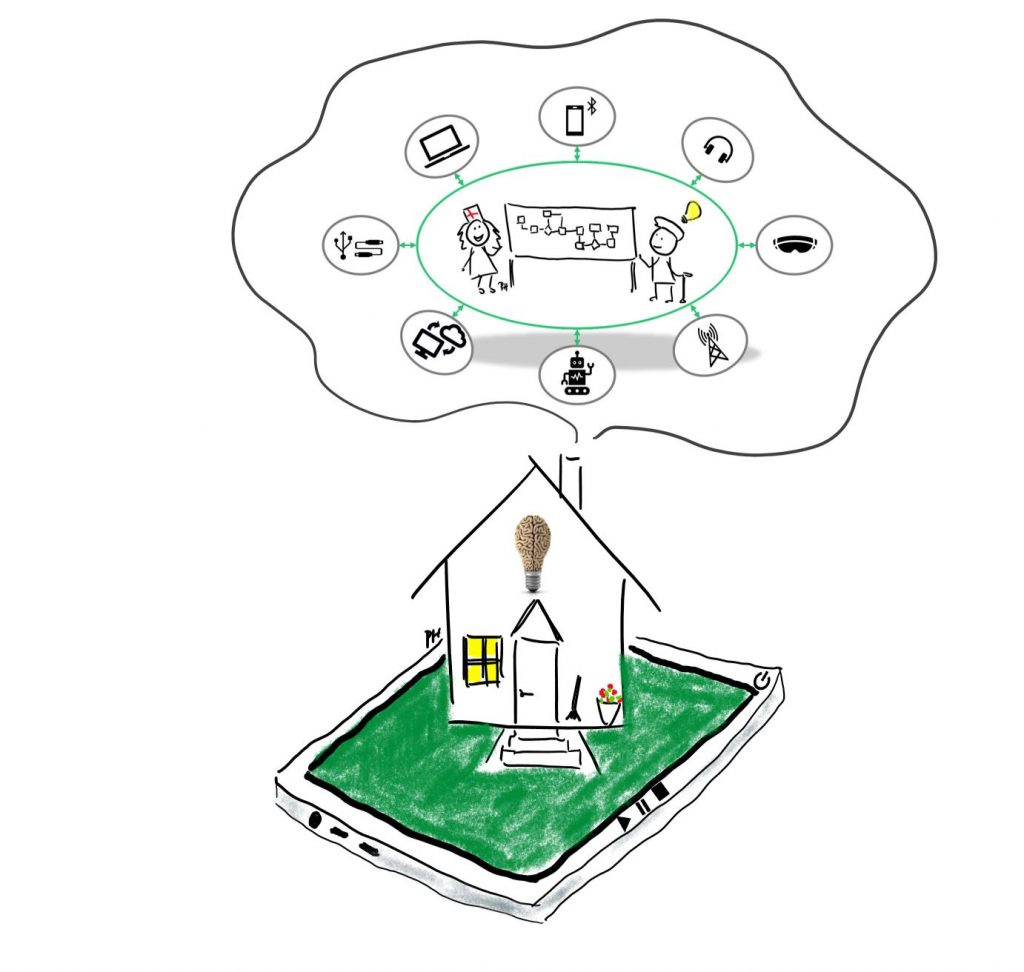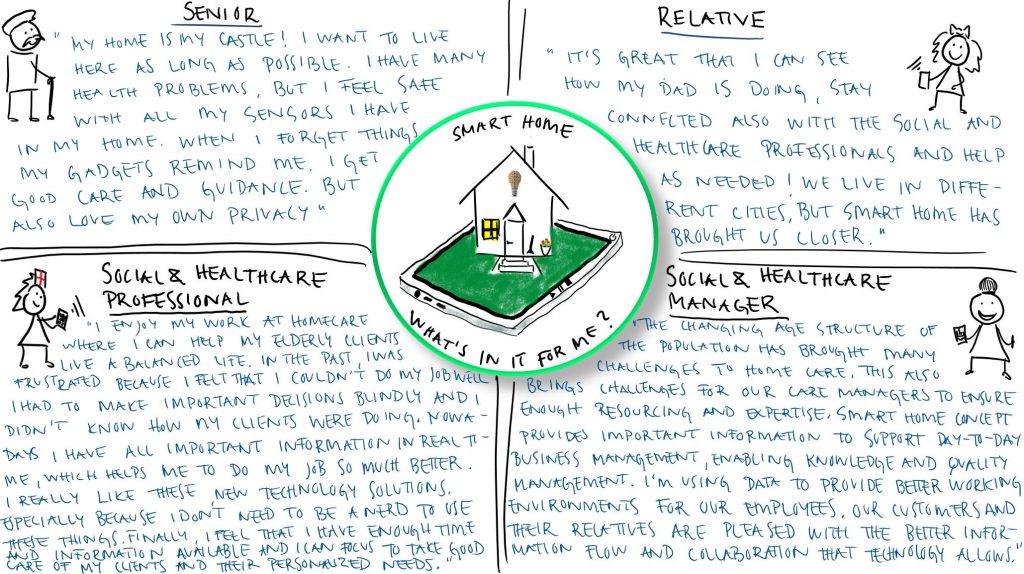

O’ou WE’RE IN TROUBLE!
Half of the social and healthcare professionals are retiring in coming years. At the same time our population is getting older. This situation creates new needs and possibilities to develop solutions for challenges this changing world desperately needs.
In Finland we are good at developing technology and sometimes it feels like we are waiting for digitalisation to be like a magic bullet that it will bring the solution to all our challenges. And it could be, in part. But first of all it requires that we develop solutions for the right needs and together with the users.
Smart Home is the answer – for what and who?
When the question is “What would be a perfect smart home for the elderly?”, the best answer is to approach the solution through the user needs. We have different kinds of users and their needs are varying. Because of this, the main thing is to understand that for starters we are not developing just new technology. Our main goal is to develop perfect home, which is not as much about buildings or smart technology, it’s more about feeling and emotion: that you are at home and you are safe. This is a number one user need.
If we ask this question from users, for example senior citizen, his/her relatives, social and healthcare professionals and managers, what would they say? And as we go further, we should think what could be the added value that smart home brings to their lives?

They wouldn’t be naming any technical solutions that much as they would be saying the things that changed for better (or worse) with new solutions. And from there we can search for the answer for what would be the solutions we need to have for a perfect home for the elderly.
Smart home: Different expectations and user experiences
SENIOR
“My home is my castle! I Want to live here as long as possible. I have many health problems, but I feel safe with all my sensors I have in my home. When I forget things, my gadgets remind me. I get good care and guidance. But also love my own privacy.”
The perfect smart home responds to the clients personalized needs by supporting, encouraging and guiding the client in everyday situations. The most common problems of the everyday life of the elderly are usually related to ability to function, treatment of diseases (especially medication), nutrition and loneliness. Smart Home responds to the identified needs of the client and supports the client in their everyday activities and, when needed, also provides information to the relatives and the social and healthcare professionals. The technology and the services are transparent to the client. They form an interoperable platform that provides relevant information to the care takers as well as relatives etc and assists the elderly in everyday tasks.
RELATIVE
“It’s great that I can see how my dad is doing, stay connected also with the social and healthcare professionals and help as needed! We live in different cities, but smart home has brought us closer.”
In the future (even today) the involvement of relatives should be seen more as a resource of elderly care. Elderly care is moving from nursing homes to home care. At the same time, it must be possible to provide social and healthcare services with tighter resources, which also requires help from relatives in the everyday life of the elderly. Perfect smart home also recognizes relatives as active participants in the everyday life of the elderly and allows for interaction and flexible collaboration not only between the elderly and relatives, but also between relatives and social and healthcare professionals.
SOCIAL AND HEALTHCARE PROFESSIONAL
“I enjoy my work at homecare where I can help my elderly clients live a balanced life. In the past I was frustrated because I felt that I couldn’t do my job well. I had to make important decisions blindly and I didn’t know how my clients were doing. Nowadays I have all important information in real time, which helps me to do my job so much better. I really like these new technology solutions. Especially because I don’t need to be a nerd to use these things. Finally, I feel that I have enough time and information available and I can focus to take good care of my clients and their personalized needs.”
Poor flow of information causes a waste of resources. The perfect smart home not only provides support and assistance to the clients in their everyday life, but also provides the professional with high quality information where and when needed. It also provides alarms to support operations and tasks. A variety of decision support solutions and control systems help professionals in their work, improve client safety and efficiency.
SOCIAL AND HEALTHCARE MANAGER
“The changing age structure of the population has brought many challenges to home care. This also brings challenges for our care managers to ensure enough resourcing and expertise. Smart home concept provides important information to support day-to-day business management, enabling knowledge and quality management. I’m using data to provide better working environments for our employees. Our clients and their relatives are pleased wit the better information flow and collaboration that technology allows. “
Technology can streamline the work of the professionals and improve the scope and impact of the services. A perfect smart home provides information to support enterprise resource planning. Of the various types, the system is available through data mining to anticipate, plan and guide activities in the short- and long-term periods.
Thoughts about pricing of the Smart Home concept
The pricing should start from the value to the client. This makes it possible to do strategic decisions on whether to develop further or kill a product.
The actual pricing of the smart home concept for the individual client depends on the services subscribed to. The services are tailored for the specific needs of the client and the monthly cost covers all the related expenses (eg. maintenance updates, version updates as well as technical support if needed).
In general, the client or his/her relative/custodian should not have to understand the actual technologies and their maintenance needs themselves. The componentization allows for flexible pricing structure and the services could be test driven for free (at least for the most part) for a fixed period.
More information and a more detailed business plan are needed to make the actual pricing possible.

